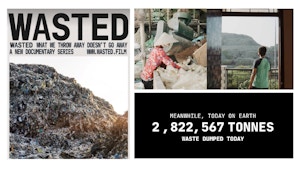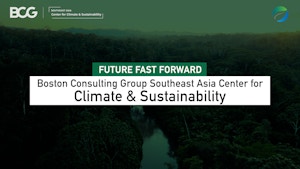Singapore News

Policy & Finance
GIC doubles down on climate tech amid market slump
As climate tech funding cools, the Singapore state-owned investor has launched an investment scheme betting on long-term returns from green assets, such as early-stage decarbonisation solutions in green steel and battery storage.

Transport
Singapore-flagged palm oil tanker dumping oily waste in Malaysian waters reveals pollution law flaw
Although it is legally permissible, critics say the discharge of waste by palm oil vessels flushing out their tanks off the coast of Malaysia is an overlooked problem.

Following the departure of its inaugural head of sustainability Rachel Teo last August, Emily Chew joins the Singapore sovereign wealth fund from Morgan Stanley’s responsible investing subsidiary.

Carbon & Climate
CIMB to stop financing new upstream oil fields from 2025
The banking group has set new targets to cut financed emissions for the oil and gas and real estate sectors by 2030, which critics say are out of step with the Paris Agreement.
Singapore Opinion

Road emissions are the leading contributor to transport emissions across the Indo-Pacific, surpassing those from shipping and aviation.

Zero-emissions vehicles would need to hit 73 per cent of new light vehicle sales by 2030 to keep transport emissions aligned to limiting warming to 1.5 degrees.

For Southeast Asia, it need not be a binary choice between maintaining status quo or pushing for 'degrowth'. Reducing emissions without neglecting job growth imposes lower social costs, and can be a pathway to take for the region.

Energy
Make hydrogen, not war
Hydrogen has a role to play in a world trying to wean itself off fossil fuels, despite concerns over its green credentials
Carbon & Climate
Strengthening Asia's voice for sustainable development
Policy & Finance
The elusive inflection point in impact investing
Singapore Videos

EB Studio
Amid fresh debates about what corporate purpose should be, there is mounting evidence that corporate purpose leads to stronger brand reputation, better talent attraction and more resilience, leading to improved financial performance.

Launched as policymakers lock horns with petrochemicals lobbyists over a treaty to end plastic pollution, the documentary produced by Eco-Business asks why opportunities to solve humanity's waste crisis are being wasted. It will premiere in Singapore and screen on the sidelines of the upcoming COP28 climate summit.

Policy & Finance
Tackling climate change in a mosaicked Asia
EB Studio
Asia's green transition pathways need to be socially inclusive given huge differences in economic development across the region, says experts at the Boston Consulting Group. State-owned enterprises have an "outsized" role to play, they add.

The Green Mortician is the city-state's first water cremation service, which has a small carbon footprint compared to traditional funeral options.
Singapore Podcasts

Carbon & Climate
‘Five years ago, everyone wanted to be Elon Musk’: Where is climate tech in Southeast Asia now?
Entrepreneur Steve Melhuish tells the EB Podcast where the biggest opportunities to reduce emissions and make money are in Southeast Asia, and why finding the right economic incentives is critical for climate tech startups.

Policy & Finance
‘DIY until we die’? LGBTQ rights group on what Singapore’s new leadership means for its movement
LGBTQ people have long had to chart their own paths in the face of discrimination on bread and butter issues, like housing and employment. Pink Dot campaigners tell the Eco-Business Podcast their hopes amid a political leadership refresh.

Carbon & Climate
‘A 1.1°C warmer world is already a matter of life and death’: Climate scientist Winston Chow
The Singapore scientist, recently elected to the UN's top climate body, tells the Eco-Business Podcast about the precarious state of climate adaptation in developing Asia. The region is not well-prepared to manage the cascading risks of extreme climate events, he says.

Food & Agriculture
Looking past the label: the nutritionists’ guide to plant-based milk
EB Studio
Plant-based milks have grown in popularity in recent years, driven by a combination of health, environmental and practical concerns. Nutritionists on the Eco-Business podcast, produced in association with Kerry, weigh the pros and cons of non-dairy milk.
Singapore Press Releases

City Developments Limited (CDL)
Rice for hope: charity relay raises over $200,000

Singapore International Foundation
Singapore International Foundation launches first collaborative platform in Southeast Asia focusing on water-related climate adaptation
Singapore Research

Eco-Business for Temasek's Ecosperity
Ecosperity Week 2024 post-conference report: Renewing our Vibrant Spring

Eco-Business, supported by UiPath
Navigating ESG reporting challenges through innovation and collaboration

Normative
How to reduce supplier carbon emissions

Eco-Business & Regional Project Energy Security and Climate Change Asia-Pacific of the KAS
The value of biodiversity for Asia's megacities
















